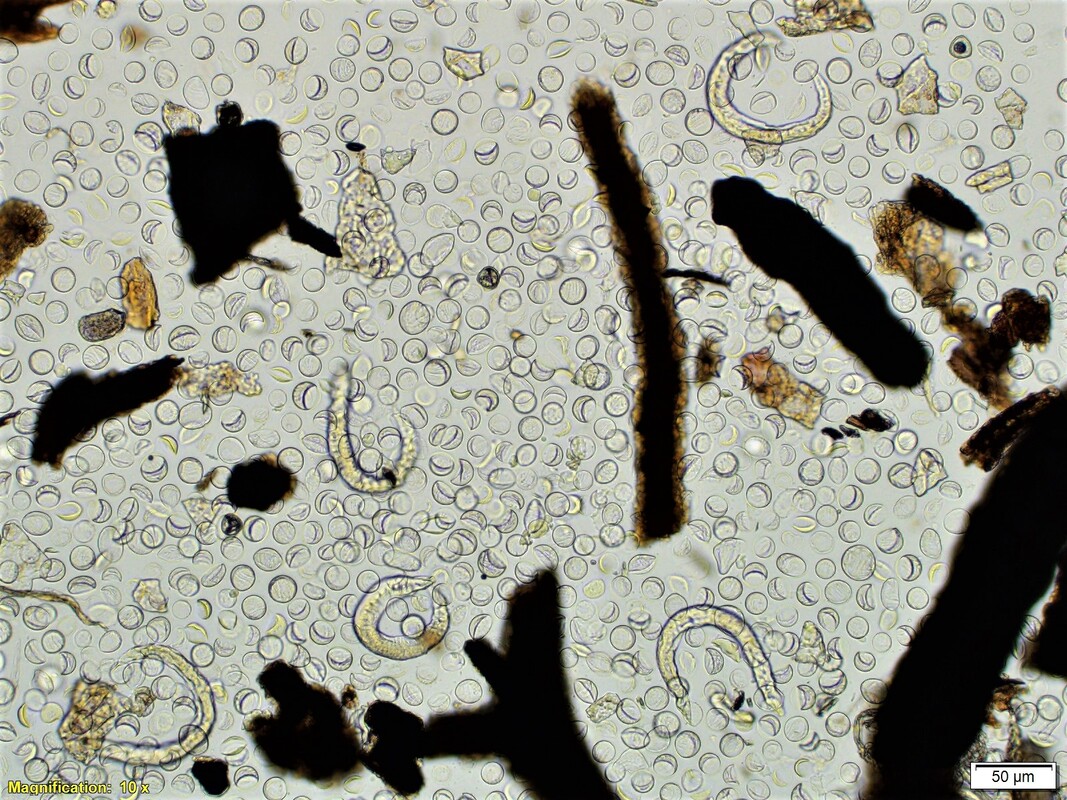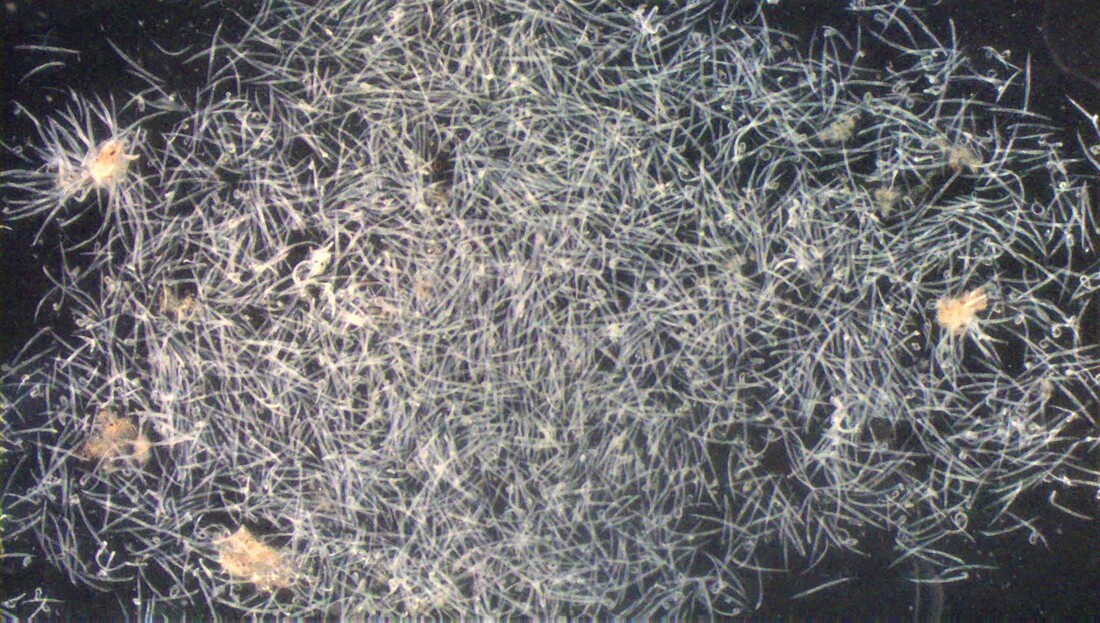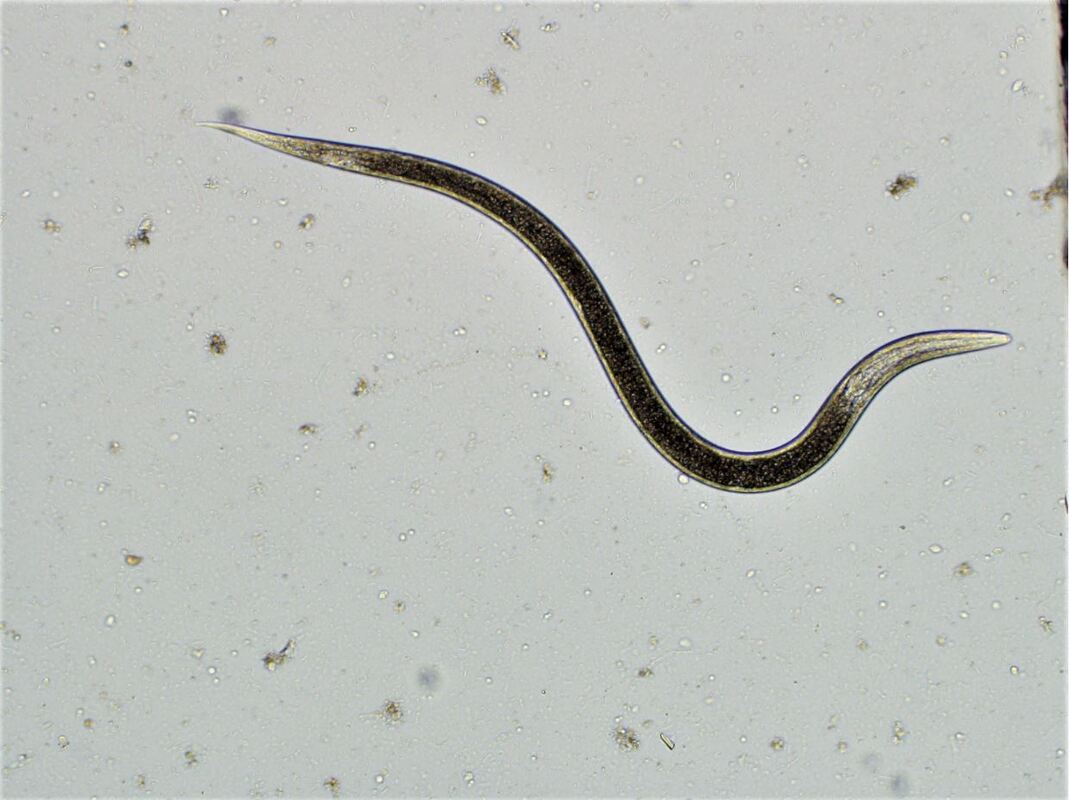Wormy ToadsTwenty-eight Colorado River toads were confiscated and sent to an exotic veterinary hospital in Oklahoma. At presentation, most of the toads were emaciated with a body condition score of 1-2 out of 5. Fecal samples collected from the colony were sent to a parasitology diagnostic laboratory. A centrifugal fecal flotation with Sheather’s sugar solution was performed (specific gravity, 1.26) and revealed numerous protozoan cysts and a moderate number of larvae (Image 1). Image 1: Centrifugal fecal flotation 100x magnification To take a closer look at the larvae, a Baermann test was performed, and a large number of larvae were recovered (Image 2). Image 2: A large mass of larvae recovered from the Baermann exam. Image 3: Larvae were approximately 300-500 µm in length with a prominent esophageal bulb 100x magnification Rhabdias spp. larvae A Rhabditiform esophagus was clearly observed in these specimens. Rhabdias is a common lungworm of frogs and toads, belonging to the superfamily Rhabditoidea. The life cycle is direct; eggs passed by the parthenogenic female are carried up from the bronchus to the mouth, swallowed, hatched, and passed in the feces as rhabditiform larvae. Frogs and toads become infected by ingestion of infective larvae or by cutaneous penetration. Larvae migrate through the body tissues and become adults in the lungs. Pathologic effects of Rhabdias are unknown. Infections without any pathologic changes are common. Most amphibians are asymptomatic; however, heavy worm burdens may cause lethargy and death. Although Rhabdias have a similar life cycle and morphologic features to Strongyloides stercoralis, they do not infect humans. Reference: Baker, David G. Flynn’s Parasites of Laboratory Animals, Chapter 8, page 146. Comments are closed.
|
Archives
July 2024
Have feedback on the cases or a special case you would like to share? Please email us ([email protected]). We will appropriately credit all submittors for any cases and photos provided.
|



